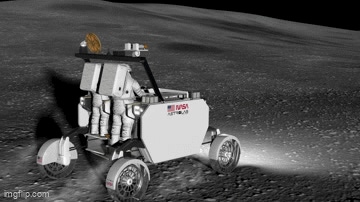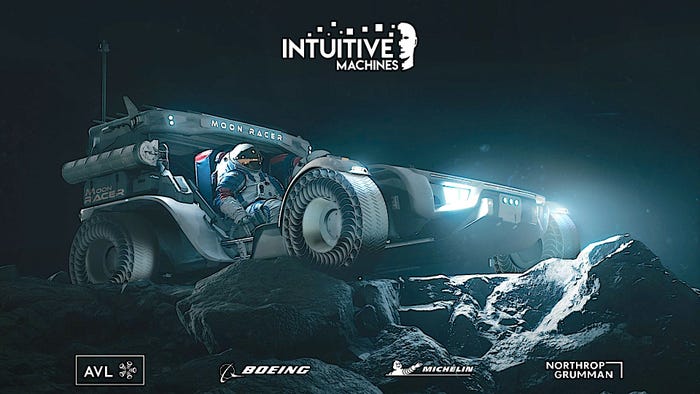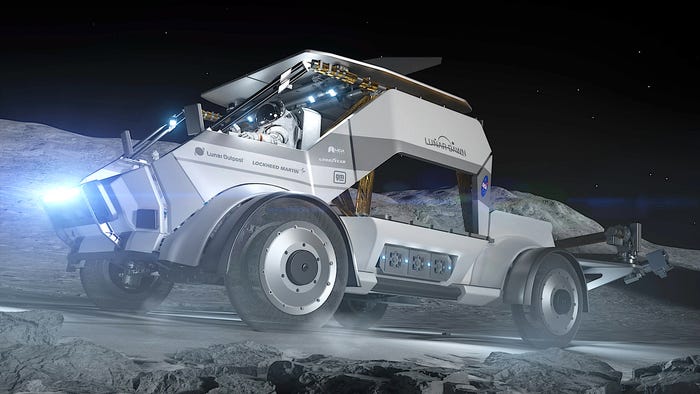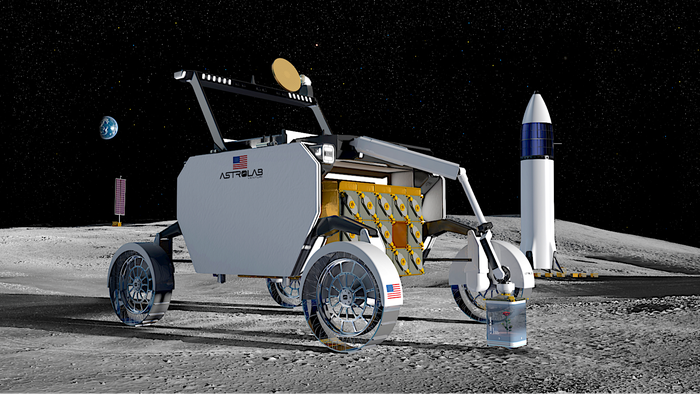NASA Is on the Road Again with $4.6 Billion Lunar Rover Contract Awards
NASA has chosen three teams to develop lunar vehicles for Artemis missions to the moon.

At a Glance
- Intuitive Machines
- Lunar Outpost
- Venturi Astrolab
NASA has named Intuitive Machines, Lunar Outpost, and Venturi Astrolab to continue developing their Lunar Terrain Vehicle (LTV) prototypes into an eventual moon rover for astronauts.
The goal is to begin using the eventually selected LTV for crewed operations during the Artemis V mission to the moon under a contract that is valued in total to be worth as much as $4.6 billion.
“We look forward to the development of the Artemis generation lunar exploration vehicle to help us advance what we learn at the Moon,” said Vanessa Wyche, director of NASA’s Johnson Space Center in Houston. “This vehicle will greatly increase our astronauts’ ability to explore and conduct science on the lunar surface while also serving as a science platform between crewed missions.”
“We will use the LTV to travel to locations we might not otherwise be able to reach on foot, increasing our ability to explore and make new scientific discoveries,” said Jacob Bleacher, chief exploration scientist in the Exploration Systems Development Mission Directorate at NASA Headquarters in Washington. “With the Artemis crewed missions, and during remote operations when there is not a crew on the surface, we are enabling science and discovery on the Moon year round.”

Intuitive Machines' Racer rover. INTUITIVE MACHINES
Contract Terms
Rather than paying a contractor to provide rovers to NASA that the agency launches to the moon on its own rockets, as was the case with the Grumman-built lunar rovers for the Apollo missions, for Artemis the agency is indefinite-delivery/indefinite-quantity (IDIQ), milestone-based Lunar Terrain Vehicle Services contract with firm-fixed-price task orders. That means the contractor delivers a working rover to the lunar landing site and NASA pays to use the rover when astronauts are there.
NASA gave the contractors the technical requirements, capabilities, and safety standards needed for LTV development and operations, and the selected companies have agreed to meet the key agency requirements. The contract request for proposal required each provider to propose a solution to provide end-to-end services, including LTV development, delivery to the Moon, and execution of operations on the lunar surface.
Because the rovers are designed to work autonomously, they can do other work for either NASA or the contractor when there are no astronauts to drive them around.

Lunar Outpost's Lunar Dawn rover. LUNAR OUTPOST
What's Next?
Each of the contractors will begin with a year-long special study to develop a system that meets NASA’s requirements through the preliminary design maturity project phase. The award for this feasibility assessment is $30 to each contractor.
Then NASA will issue a subsequent request for task order proposal to one of the eligible providers for a demonstration mission to continue developing the LTV, deliver it to the surface of the Moon, and validate its performance and safety ahead of Artemis V. As the agency increases the pace of its lunar missions, NASA will issue additional task orders for more rovers through 2039.
The LTV must handle the extreme conditions at the Moon’s South Pole and includes technologies for power management, autonomous driving, communications, and navigation systems. Crews will use the LTV to explore, transport scientific equipment, and collect samples of the lunar surface.

Venturi Astrolab's Flex rover. VENTURI ASTROLAB
Contenders
Intuitive Machines’ Moon Reusable Autonomous Crewed Exploration Rover (RACER) vehicle is built with the support of partners that include AVL, Boeing, Michelin, and Northrop Grumman (which is the descendent company of the one that built the original Apollo lunar rover. Intuitive will deliver the LTV to the moon using its Nova-D cargo lunar lander. That is a follow-on to the company’s Nova-C lander, which tipped over following a hard landing in February due to the failure of the vehicle’s landing lidar.
Lunar Outpost leads a team that is backed by Lockheed Martin, General Motors, Goodyear, and MDA Space for the Lunar Dawn rover. “We look forward to leveraging the strengths of Lockheed Martin, a company with extensive human and advanced space systems experience, and our other industry teammates, GM, Goodyear, and MDA Space, to provide an unparalleled technical offering at a commercially viable price point,” said Lunar Outpost CEO, Justin Cyrus. “Our team provides proven human and robotic heritage, which is extraordinarily difficult to come by and we are fortunate to have them as part of our group.”
Venturi Astrolab says it already has $160 million in commercial contracts for its Flexible Logistics and Exploration (FLEX) rover that it plans to land on the moon in mid-2026. Announced customers include Argo Space, Astroport, Avalon Space, Interstellar Lab, and LifeShip. The company says the Flex rover will fly aboard SpaceX’s Starship. “The Astrolab team is comprised of many incredible individuals with decades of experience in spaceflight, mobility, and planetary robotics,” said Jaret Matthews, founder and CEO of Venturi Astrolab.
“I would also like to thank our LTVS team members, Axiom Space and Odyssey Space Research, who are bringing to the team their deep experience in crew interfaces, crew training, flight software, simulation, mission assurance, and mission operations,” he continued. And finally our strategic partners at Venturi, who are bringing advancements in mobility, energy storage, and lunar tire design.”
About the Author(s)
You May Also Like





